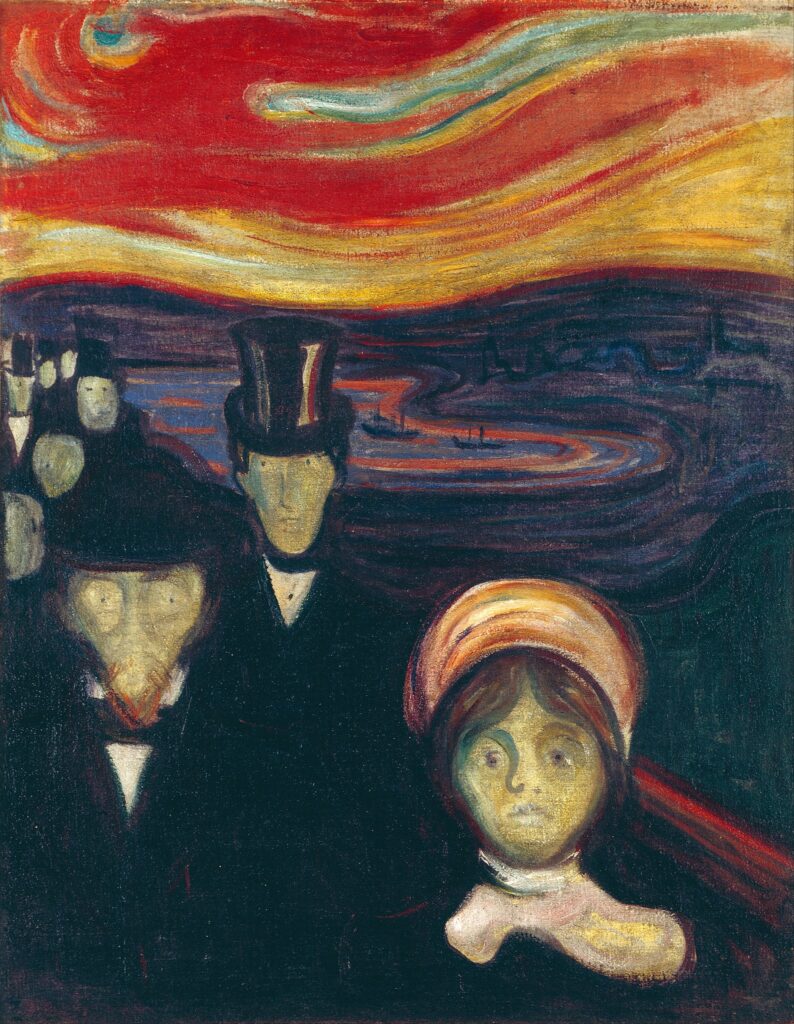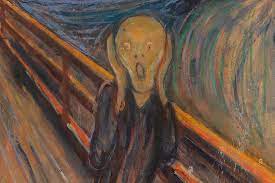Topic: Set theory; natural, real, rational, irrational, and complex numbers
Area: Mathematics
Abstract: The agonized face in the painting has become one of the most iconic images of art, seen as symbolizing the anxiety of the human condition. Taking inspiration from the painting, the use of nonverbal communication such as facial expression is applied to explain the set theory. Additionally, that’s an example of synaesthesia – students have to guess to what cluster (e.g., natural, real) belong by the facial and body expression of the others, connecting this to a number.
Learning objectives:
1. Set theory
2. Nonverbal communication
3. Observation and interpretation skills
Advisable age of students: 11-14
Previous knowledge: The different sets of numbers
Total duration: 30 min
Materials: paper, markers/pen
Phase 1 Visualisation
Duration: 10 min
Development : The Scream is an example of expressionism that in fact expresses the vivid anxiety of the human condition of our time. Starting from this concept, the use of nonverbal communication is channelled to embody a number. Namely, to each student is given a number that belongs to one of the sets, and no one else knows what number is – besides the student himself. Each set has to be represented through facial and body expressions which embody human characteristics of that set of numbers. For instance, irrational numbers could behave irrationally, performing strange expressions like getting upset or angry. Or real numbers acting serious, professional, and so on. Through this act, the students have to understand to which set they belong and form a circle with the other students with the same set. During the workshop the participants cannot talk, just using nonverbal communication.
Phase 2 Artistic action and experimentation
Duration: 10 min
Development:
•Write down on small pieces of paper (or post-it) random numbers for each set – natural, real, rational, irrational, and complex.
•Consider that each set is bigger than the one that includes in (rational numbers set is bigger than the natural); hence, distributes the post it accordingly (for instance, do not distribute more natural numbers than irrational).
•Each student knows just his/her own number.
•When the act starts, the student has to recognise to which set of numbers belongs by observing and interpreting the others’ expressions. Once they do their guess, the start to shape a circle hand-by-hand.
•At the same time, once the circles are being formed, the students have to understand what the other sets are doing and reflect whether they have to be included in one or the other group.
•Once everyone finds his/her set and the ones to include/be included, it’s time to show the numbers and see if the set are correctly formed or someone is within the wrong set.
Phase 3: Reflexion and debate
Duration: 10 min
Development:Engagement – How it was for you to collaborate with your peers?Did you face any challenge during the development of the exercise?How did you overcome it? Do you think using nonverbal communication to personify numbers (synaesthesia) has been an engaging approach to explain the set theory?
Efficacy – Do you think the activity was well-explained? How did you find the support of the trainer? Did you learn something about the topic? What would you suggest to improve the trainer approach? And what about the activity? Do you think the material was correctly set for the development of the exercise? Is there any other suggestion or reflection that would you like to share?
References and links: https://www.edvardmunch.org/the-scream.jsp


